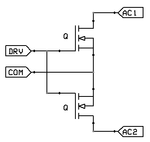ankitvirdi4
Member level 4
Hello,
I basically have project part of which requires to switch a 100mA load which can be 5 to 230VAC or 5 to 300V DC.
The load is supposed to turn on and off say 10 times a second, like a square wave.
I need to isolate the load from the primary circuit
So SSRs are perfect for the application, only they are very expensive.
Is there an alternative?
Can I use miniature reed relays given they will continuesly be switching a load?
I basically have project part of which requires to switch a 100mA load which can be 5 to 230VAC or 5 to 300V DC.
The load is supposed to turn on and off say 10 times a second, like a square wave.
I need to isolate the load from the primary circuit
So SSRs are perfect for the application, only they are very expensive.
Is there an alternative?
Can I use miniature reed relays given they will continuesly be switching a load?
